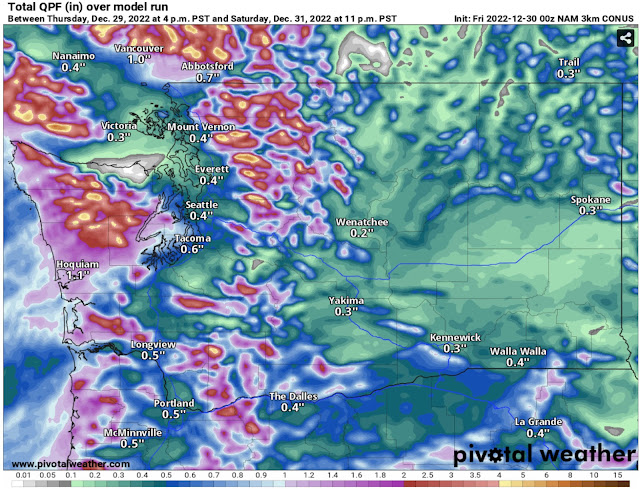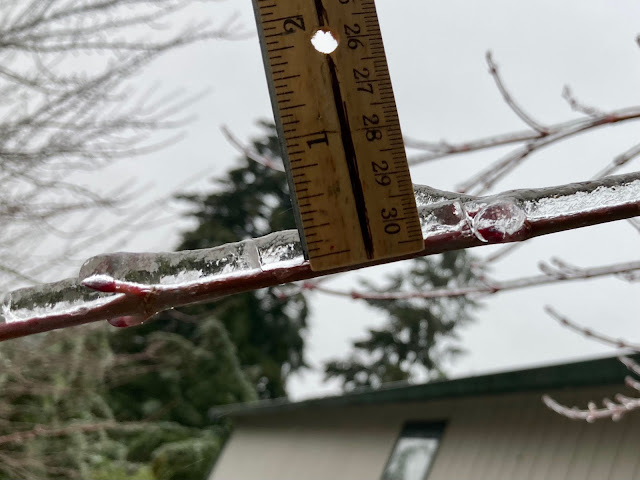FastCast—Friday, Dec. 30 to Sunday, Jan. 1:
A system will move through Western Washington from late Thursday through Friday, with rain becoming showery at times on Saturday. Across the lowlands, expect 0.4-1.25 inches of rain, except 0.2-0.4 inches for the Olympic rain shadow. The coast will get 0.75-1.5 inches, and the mountain passes will receive 4-10 inches of snow. Eastern Washington, mainly from I-90 northward and in Yakima County will get 1-3 inches of snow. Conditions in the lowlands will be breezy, with gusts of 25-35 mph possible, except up to 35-40 mph on the coast and from Everett northward. Winds will be strongest early Friday. Conditions will transition to partly sunny on New Year’s Day. Through New Year’s, expect highs in the mid to upper 40s, with lows in the mid 30s to low 40s.
———————————————————————
Continue reading the full blog below!
The last system of 2022 is moving into Western Washington, bringing showers and breezy conditions through midday Saturday. Let’s start with the European model forecast for total rain through 10 PM Saturday.
The European model shows 0.75-1.25 inches of rain for the lowlands, 1-2 inches for the coast, and 0.2-0.5 inches for Eastern Washington.
Let’s compare this with the higher resolution NAM model, showing rain through 11 PM Saturday.
The NAM shows lower precipitation amounts of 0.4-0.6 inches for the lowlands and 0.9-1.25 inches for the coast. Eastern Washington gets 0.2-0.4 inches with this forecast.
Additionally, mountain pass travel will be impacted by snow, as snow levels have dropped back below the passes. Let’s take a look at the European model’s forecast below, for snow through 10 PM Saturday.
The European model shows 4-10 inches of snow at the passes and 8-12 inches at higher elevations. Eastern Washington will receive 1-5 inches outside the lower Columbia Basin by Saturday.
Now, let’s take a look at the higher resolution NAM forecast for snow through 11 PM Saturday.
The NAM forecast shows 3-6 inches for the passes, 6-12 inches for the higher elevations, and 1-4 inches in Eastern Washington outside the lower Columbia Basin.
There will be some windy conditions with this system, but only in localized areas and much calmer than the previous storm. Below is the European model showing max wind gusts on Friday morning.
Expect peak gusts of 25-35 mph in the lowlands and 35-40 mph on the coast and from Everett northward.
Finally, a brief break in the weather is expected for late New Year’s Eve through New Year’s Day. Below is the European model showing upper level conditions on New Year’s Day.
Notice inside the black box. This shows a brief high pressure ridge (called a transitory ridge) that will bring dry weather for the beginning of 2023!

























































